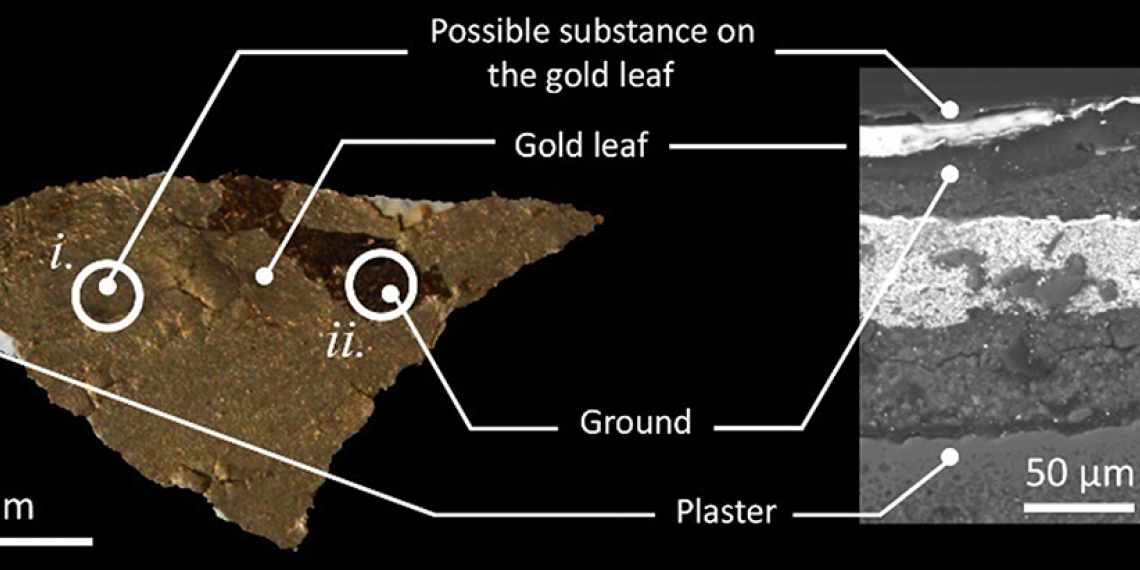
Gildings are commonly found highlighting details of ornamental or iconographic value such as halos. They are documented on a variety of artefacts including statues, stuccos, wall paintings as well as paintings on canvas, wood panels and illuminated manuscripts. Gildings consist of µm-thick leaves of different metals (e.g., gold, silver, metal alloys) applied to the substrate by a thin adhesive ground layer. Depending on the gilding technique, the composition of the ground may vary from mainly inorganic to mainly organic, and may be coloured with pigments (as e.g., lead pigments, ochres). Over time, such materials undergo unavoidable decay due to oxidation of metal leaves and loss of adhesive properties of the ground, hence conservation treatments can be applied to restore the mechanical–optical properties of the original materials, or to protect the gilding from further interaction with the environment. This note investigates the gilding technique.

